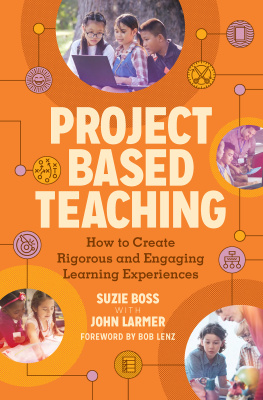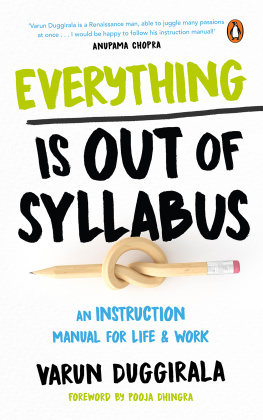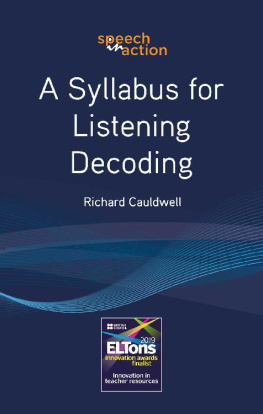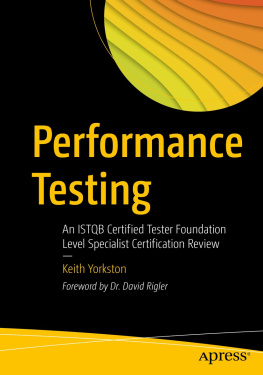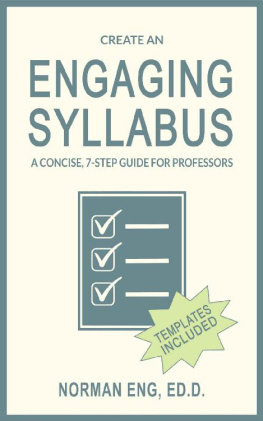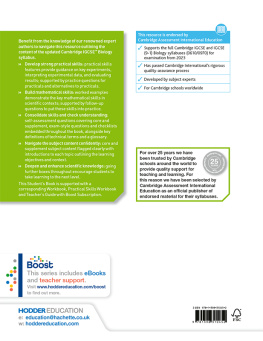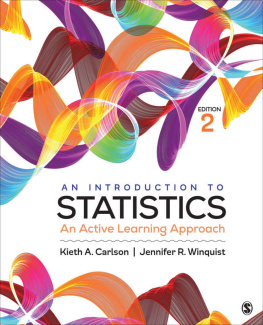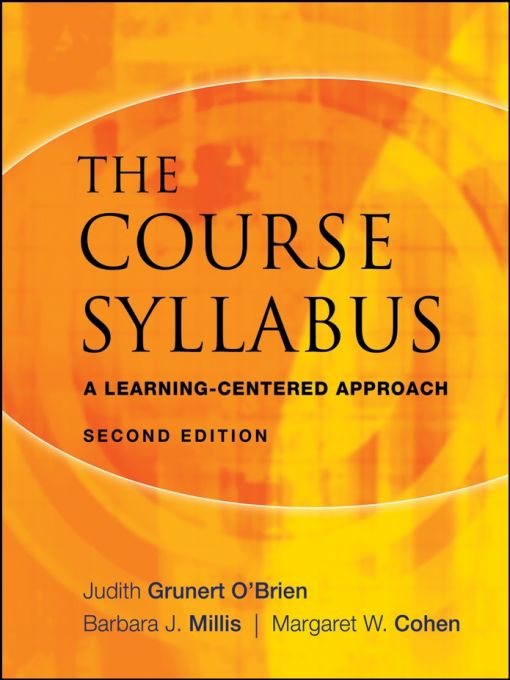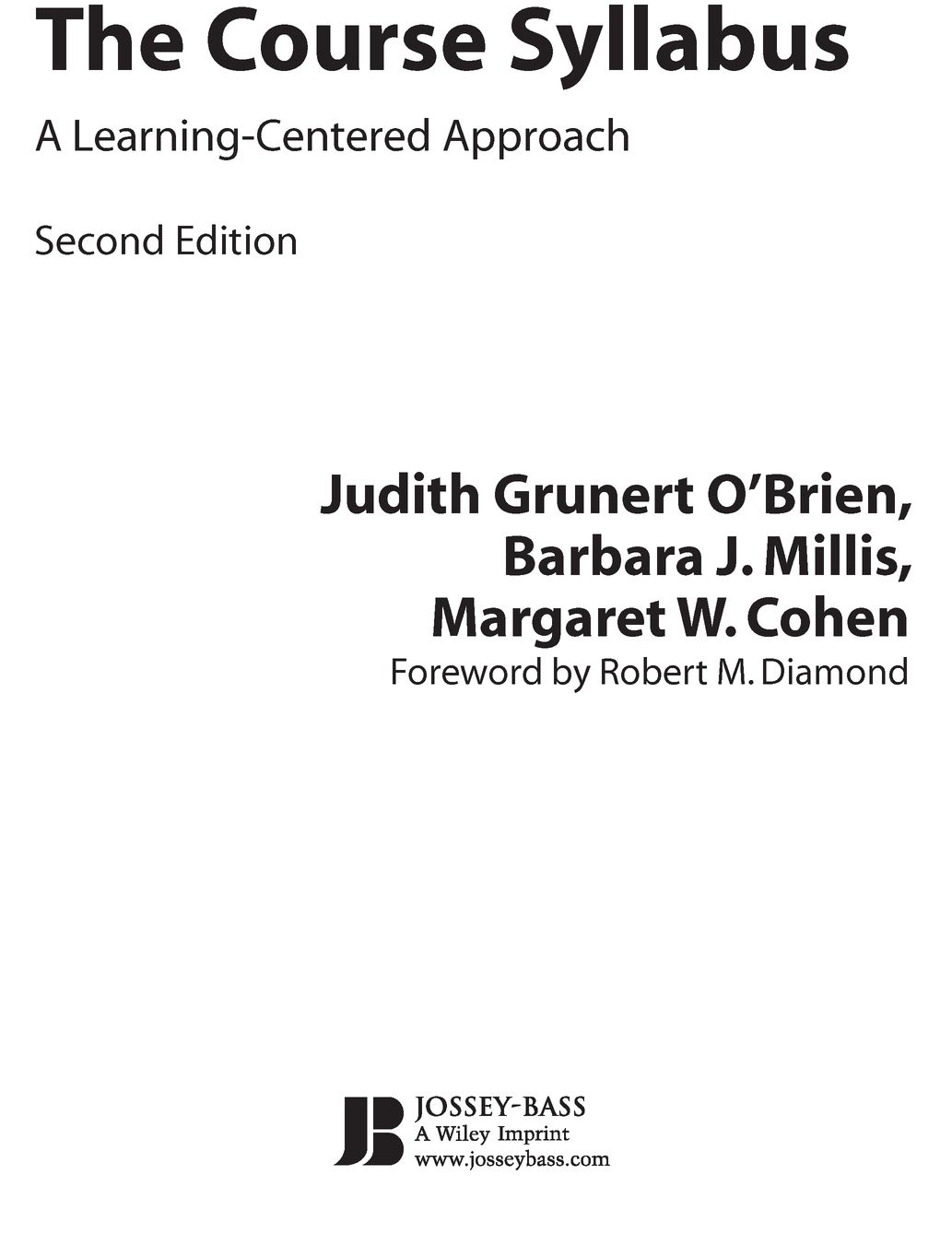Table of Contents
Praise forThe Course Syllabus, Second Edition
I cant imagine how many times Ive recommended this bookto new faculty, to part-time teachers, to experienced pedagogues, and to faculty finding their way to more learner-centered approaches. I cant imagine a book more deserving of a second edition. And, I cant imagine a second edition better than the first, but this one is, thanks to the able efforts of two new authors.Maryellen Weimer, professor emeritus, Penn State, and editor, the Teaching Professor

New and veteran college teachers alike, in all types of institutions from the community college to the university level, will benefit from this highly thoughtful, scholarly, and persuasive argument for the critical role of the learning-centered course syllabus. The authors clearly and convincingly demonstrate how to create a learning-centered course syllabus that becomes a dynamic, essential part of a course that encourages student engagement, active learning, and critical thinking. A must-read for anyone committed to teaching todays college students to maximize their skills and knowledge for a changing world!Angela Provitera McGlynn, professor emeritus of psychology and author of Teaching Todays College Students and Successful Beginnings for College Teaching

Its obvious that Millis and Cohen have extensive backgrounds in college teaching and learning. Their work on the syllabus as a fundamental component of good teaching is supportive, insightful, current, and practical. This is a masterful updating of Grunerts classic, relevant across all disciplines.Nancy Chism, professor of higher education, Indiana University
All individuals involved in instructing todays (and tomorrows) college students facing twenty-first century academic challenges should read this book for helpful suggestions on how to prepare an enhanced blueprint for learning and academic successthe course syllabus.James E. Groccia, director, Biggio Center for the Enhancement of Teaching and Learning; associate professor, educational leadership; and past president, POD Network in Higher Education
This book is unusually good. Comprehensive, clear, practical, and immediately useful, it should be read by every department chair and faculty member.Peter Seldin, Distinguished Professor of Management, Pace University
This update of The Course Syllabus includes, among other fine features, an excellent review and incorporation of ideas from the literature on college teaching that have been published since the original version.L. Dee Fink, national project director, Teaching & Curriculum Assessment Project
The syllabus is much more than a course description; it is a working document for both the instructor and the students. In The Course Syllabus, Grunert, Millis, and Cohen have provided a well-documented, up-to-date road map for teachers and learners alike to using the syllabus effectively by emphasizing the value of the learning-centered approach.Marilla D. Svinicki, professor, Department of Educational Psychology, the University of Texas at Austin
The Jossey-Bass
Higher and Adult Education Series
This book is dedicated to our college
and university colleagues who are teaching students
to value the processes of learning as much as they do.
Foreword
THE RESEARCH ON teaching and learning is consistent: the more information you provide your students about the goals of a course, their responsibilities, and the criteria you will use to evaluate their performance, the more successful they will be as students and the more successful you will be as a teacher. This is no easy task. It requires a great deal of effort on your part and, often, far more work than you originally anticipate.
The first step is to develop a clear set of learning goals or outcomes for each course and for every one of its units. You will then want to ensure that the methods you use to evaluate student success align with the goals of these courses. In addition, students need to understandand perceive as fairthe criteria you will use to determine their grades and the standards of acceptable performance. After you have determined the goals and the evaluation criteria, you can then focus on the specific activities and assignments that will help students achieve the goals. Students will also need to know what you expect of them academically and socially. Perhaps equally challenging, students must read and use this information once you provide it to them.
Unfortunately, in too many instances your students will enter your course without the study skills and habits necessary to effectively use even the best information. Todays students need you to reinforce the importance of the material you provide and give them detailed information on how to best use it. Just handing students a quality study guide or syllabus is not enough. You need to introduce the importance of your stated learning goals, show students how these outcome statements are directly related to how they are evaluated, and then reinforce this relationship through quizzes, tests, and assignments early and often.
In addition, technology, changing demographics, distance education, and new ways of thinking about the nature of knowledge in the information age have prompted many changes in teaching that may be unfamiliar to your students. New learning opportunities abound through the Internet, including Web sites (such as MySpace and YouTube), e-mail, and course management systems (such as Blackboard, WebCampus, Angel, and Moodle)which all allow academic exchanges to occur outside regular class meetings. The significant increase in part-time and adult students (including first-generation students), as well as in internships and extended classroom activities, has affected the nature of what and how we teach. The traditional one- to three-page syllabus is ineffective for helping students understand their expanding role in the learning enterprise. To understand the expectations that you have of them and the plans that have been established for their learning experience, your students need more comprehensive information than the traditional syllabus provides. The Course Syllabus: A Learning-Centered Approach addresses student learning and responds to this question: what do students need to know to derive maximum benefit from their educational experience?


